Move Actions
Fighters can move across the battlefield by making a move action. Every fighter has a Move characteristic, shown on their profile, which determines the number of inches a fighter can move in total in a single move action.
When a fighter makes a move action, there are 4 ways in which they can move: move normally, jump, climb and fly. A fighter can move in any combination of these ways as part of a single move action, so long as the total distance in inches moved does not exceed the fighter's Move characteristic.
As a fighter moves across the battlefield, they can pivot freely so long as at the end of the move action no part of the fighter is further from its starting position than a number of inches equal to its Move characteristic.
There are general limitations a fighter must adhere to when making a move action:
- A fighter cannot move through other fighters.
- A fighter cannot move through any part of a terrain feature.
- No part of a fighter can move over the battlefield edge.
- A fighter cannot start a move action if they are within 1" of any enemy fighters. They must make a disengage action instead if they wish to move away.
Moving Normally
During a move action, a fighter can move normally whenever the centre of their base is on the battlefield floor or on a platform. When a fighter moves normally, the centre of their base must remain on the battlefield floor or a platform at all times, unless they are moving over low terrain.
Jumping
During a move action, a fighter can jump. If they do so, the fighter moves in a straight line horizontally through the air, and can move any distance vertically downwards through the air.
When a fighter jumps, count the horizontal distance moved towards the number of inches that fighter can move in total in that move action as normal, but do not count the distance moved vertically downwards. However, if the fighter moves 2" or more vertically downwards when jumping, they suffer impact damage at the end of that move action.
If a fighter finishes their move action still in the air, immediately move them vertically downwards until a part of their base is either on or touching part of a terrain feature or the battlefield floor. If the fighter moves 2" or more vertically downwards in this manner, they suffer impact damage.
Climbing
During a move action, if a fighter is touching a part of a terrain feature that is an obstacle, they can begin to climb. While climbing, a fighter can move vertically up or down through the air as well as horizontally, but they must stay within ½" of the obstacle they are climbing at all times. Once a fighter begins to climb, they are said to be climbing until the centre of their base is on the battlefield floor or a platform, or until they jump or fly. A fighter can finish a move action while climbing, but if they are still climbing when their activation ends, they fall (see right).
Fighters with the Mount runemark () cannot climb, with the exception of climbing stairs.
Flying
Fighters with the Fly runemark () can fly during a move action. If they do so, the fighter can move through the air vertically and horizontally. Count the horizontal distance moved towards the number of inches that fighter can move in total in that move action as normal, but do not count the distance moved vertically. Flying effectively allows a fighter to pass over terrain features and other fighters.
Once a fighter begins to fly, they are said to be flying until the centre of their base is on the battlefield floor or a platform. A fighter cannot end a move action flying.
Falling
There are a few situations that can cause a fighter to fall. Firstly, if a fighter finishes a move action with the centre of their base not on the battlefield floor or a platform, and they are not climbing, that fighter falls.
Secondly, if a fighter is still climbing when their activation ends, they fall.
Lastly, fighters may fall as a result of being attacked near the edge of a platform.
If a fighter falls, the opposing player picks a point on a platform or the battlefield floor that is within 2" horizontally of the fighter that has fallen and that is vertically lower than the fighter that has fallen. The fallen fighter is then placed with the centre of their base on that point.
The player cannot pick a point that would cause the fallen fighter to be placed on or through another fighter or through a terrain feature. If it is impossible not to do so, and the centre of the base of the fallen fighter is on a platform, they remain where they are. If the centre of the base of the fallen fighter is not on a platform, they are immediately taken down instead.
If the fallen fighter is now 2" or more vertically lower than their location before they fell, they suffer impact damage (see right).
Impact Damage
If a fighter suffers impact damage, roll a dice. On a 1, allocate 3 damage points to that fighter. On a 2-3, allocate 1 damage point to that fighter. On a 4+, nothing happens.
Disallowed Moves
If a fighter's move causes them to break any of the limitations of move actions, it is referred to as a disallowed move. For example, if a fighter jumped and the vertical distance moved downwards caused them to pass through another fighter, this would be a disallowed move.
Fighters cannot make disallowed moves. If one occurs during a move action, place the fighter making the move action back at their starting position and choose a new direction for them to move.
Remember – as players are allowed to pre-measure any distances, you can plan your move action ahead to make sure it is not a disallowed move.
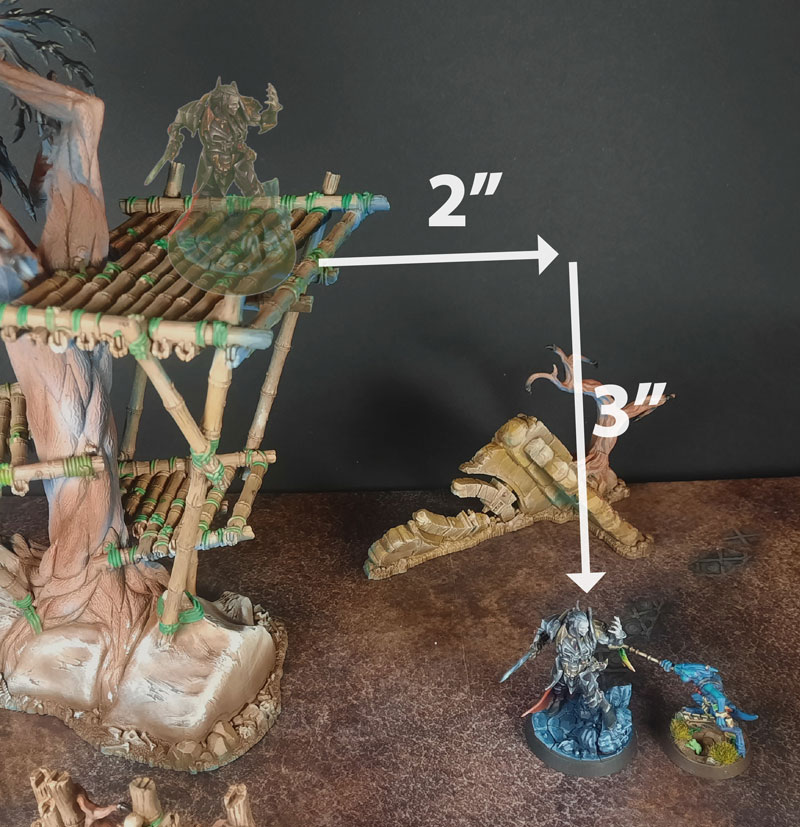
This fighter makes a dramatic jump over an enemy fighter with their first action, ready to strike with their second.
When making the jump, only the horizontal distance counts towards the total distance the fighter can move. However, after the jump, as the fighter has moved more than 2" vertically downwards, they first suffer impact damage.
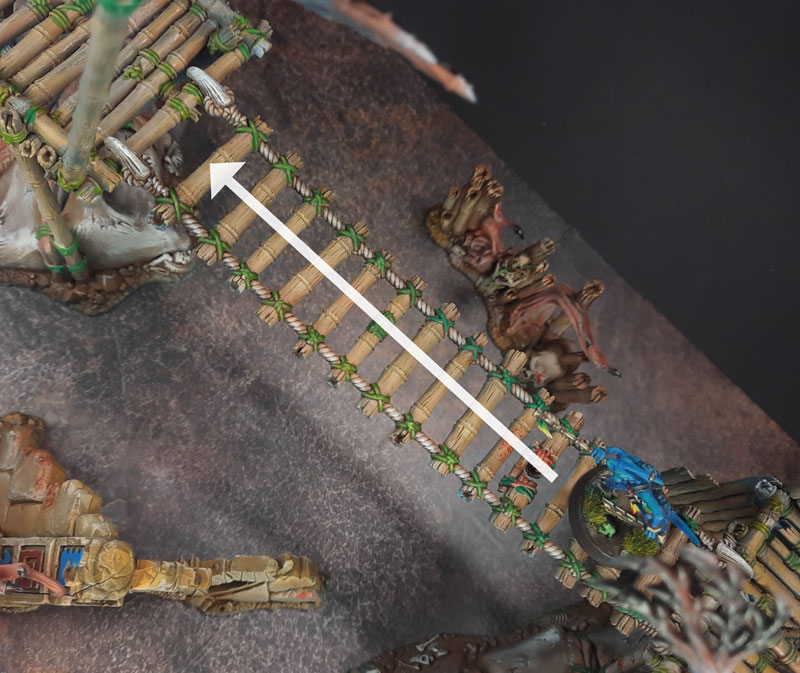
Although the edge of this fighter's base hangs over the edge of this platform, this is an allowed move because the centre of their base has remained on the platform at all times. This enables models with larger bases to still use walkways and small platforms.
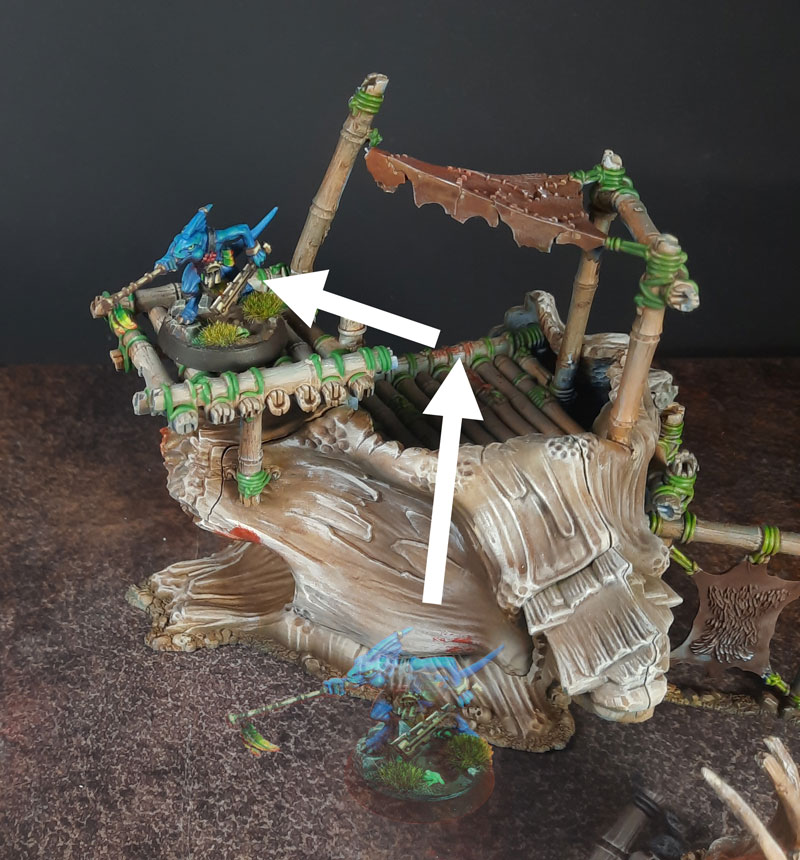
As a fighter can move normally, jump, climb and even fly all in the same move action, it allows players to get creative with their fighter's movement. This fighter climbs up the trunk of this tree before jumping across onto the platform to the right.
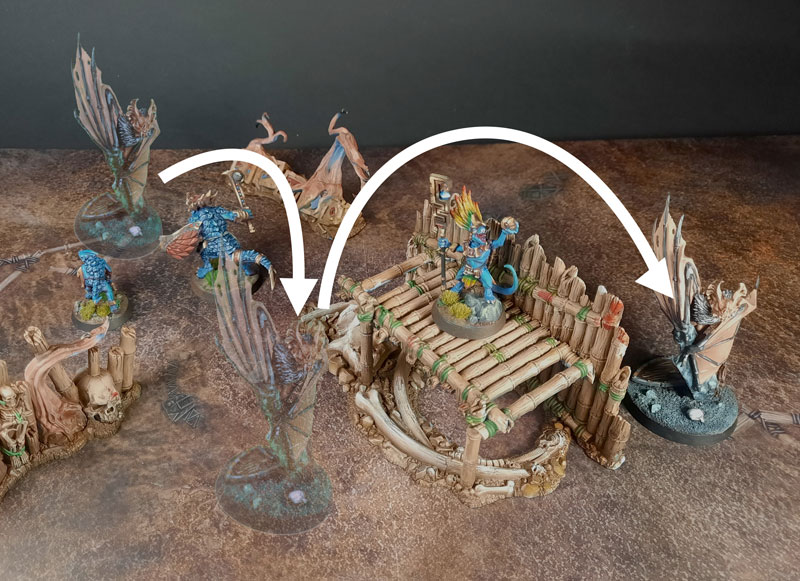
When a fighter flies, only the horizontal distance counts towards the total distance they can move. This allows a flying fighter to hop over intervening terrain and other fighters with ease.
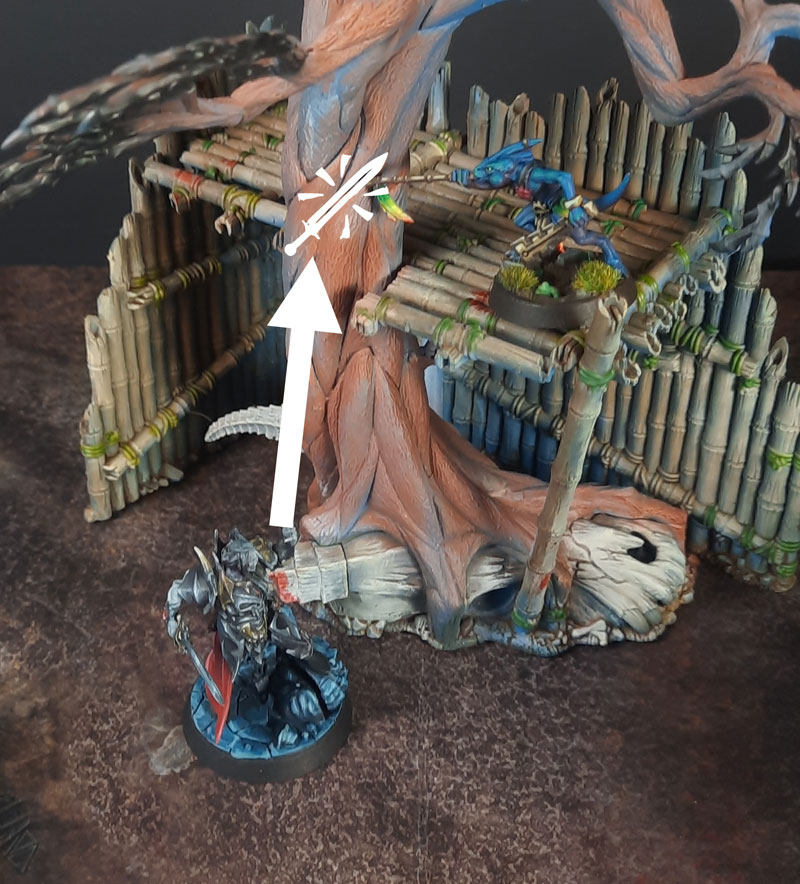
Even if one of your fighters is unable to reach an enemy fighter on a platform, they may still be able to attack them. In this example, the Rotmire Creed fighter is blocking the edge of the platform, so the Horns of Hashut fighter uses their first action to climb the tree and ends that action still climbing. They then use their second action to attack the Rotmire Creed fighter. At the end of their activation, the Horns of Hashut fighter falls because they are still climbing, but at least they were able to strike at the enemy beforehand!
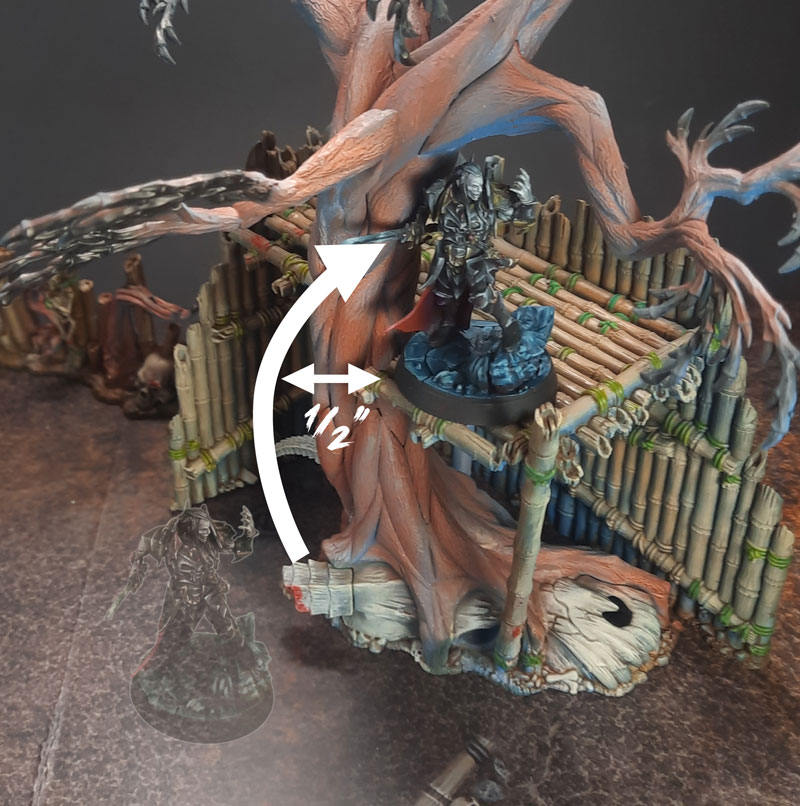
Measuring climbs is simple even for obstacles with complex surfaces, such as trees. As the fighter moves through the air, with the only restriction being that they must remain within ½" of the obstacle they are climbing, you do not have to measure every nook and cranny on the surface of the obstacle the fighter is climbing.